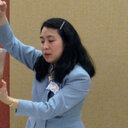Antiplatelet actions of panaxynol and ginsenosides isolated from ginseng.
کلید واژه ها
خلاصه
The antiplatelet effect of panaxynol isolated from the diethyl ether layer was compared with those of ginsenosides from the butanol layer of Panax ginseng. Panaxynol (0.1 mg/ml) inhibited markedly the aggregation of washed platelets induced by collagen, arachidonic acid, ADP, ionophore A23187, PAF and thrombin while ginsenosides had no significant effect on the aggregation but ginsenoside Ro (1 mg/ml) inhibited the ATP release of platelets. Less inhibitory effect of panaxynol was observed in the aggregation of platelet-rich plasma. Thromboxane B2 formation of platelets was inhibited by panaxynol but not by ginsenosides. The antiplatelet effect of panaxynol was dependent on the incubation time and the aggregability of platelets inhibited by panaxynol could not easily be recovered after washing the platelets. In human platelet-rich plasma, panaxynol prevented secondary aggregation and completely blocked ATP release from platelets induced by epinephrine and ADP. Both panaxynol and ginsenoside Rg2 inhibited the rise of intracellular calcium caused by collagen. It is concluded that panaxynol is the most potent antiplatelet agent in ginseng and its mechanism of action is chiefly due to the inhibition of thromboxane formation.


